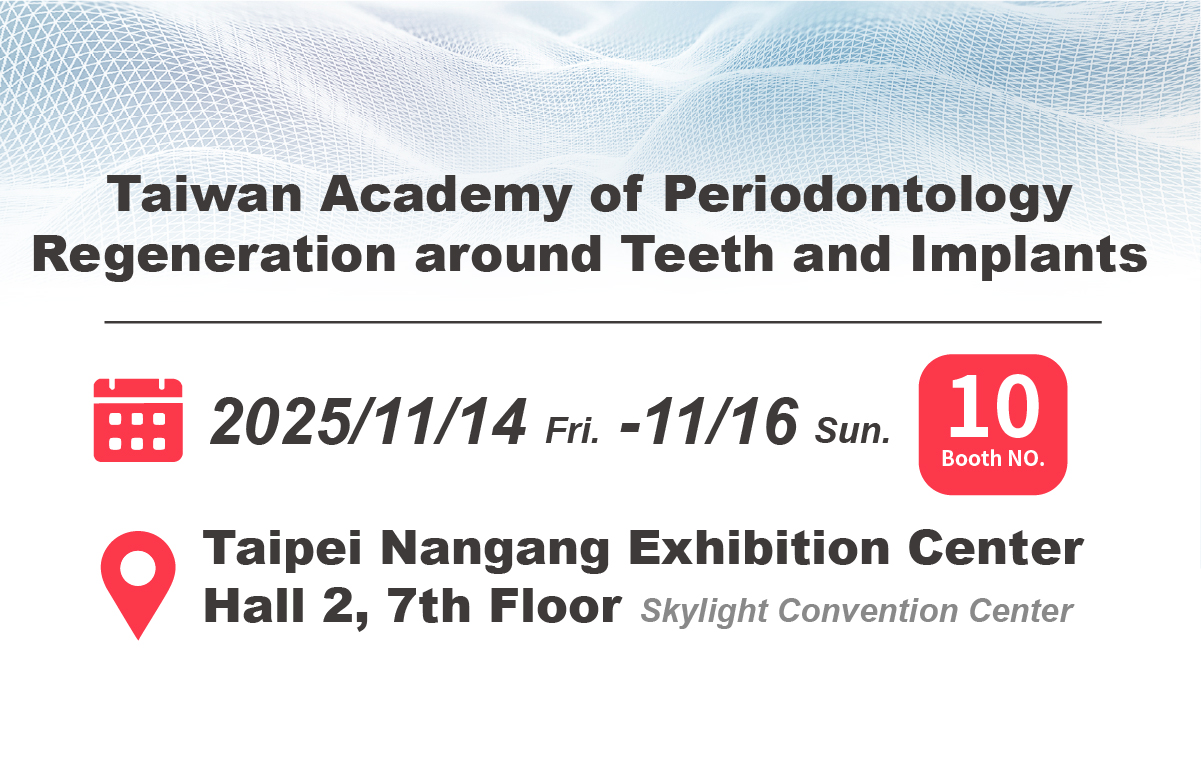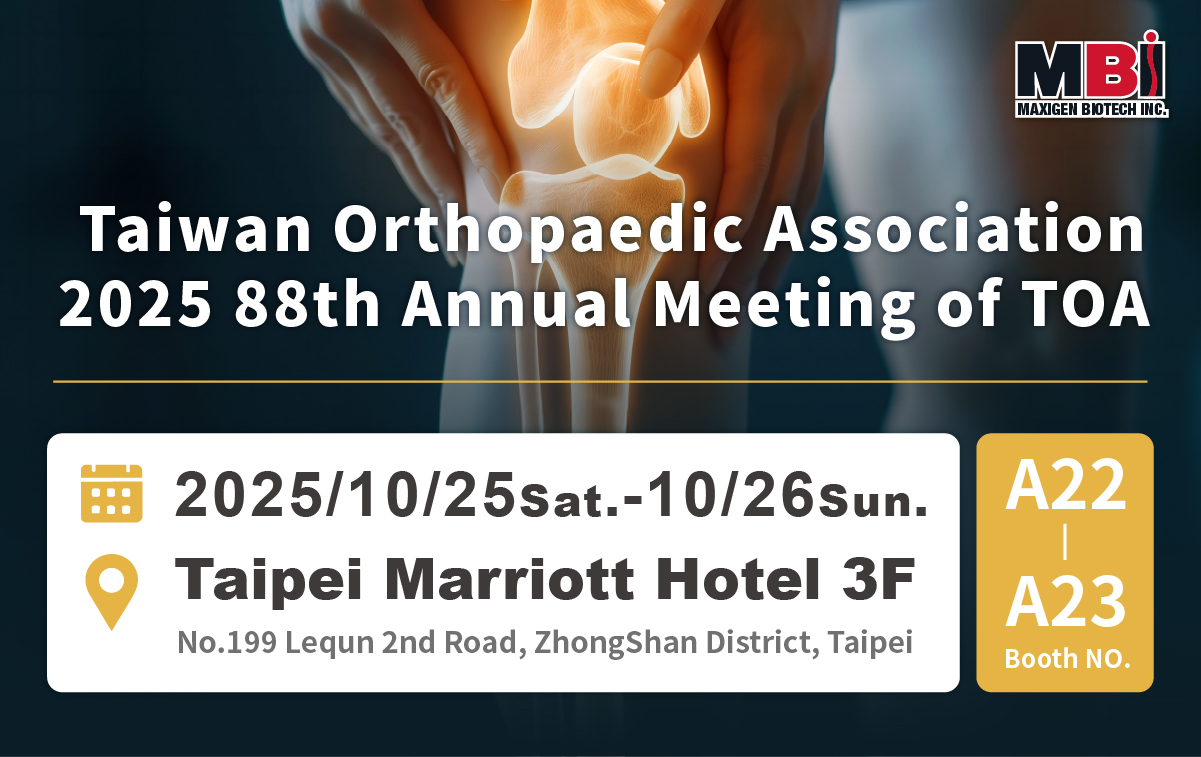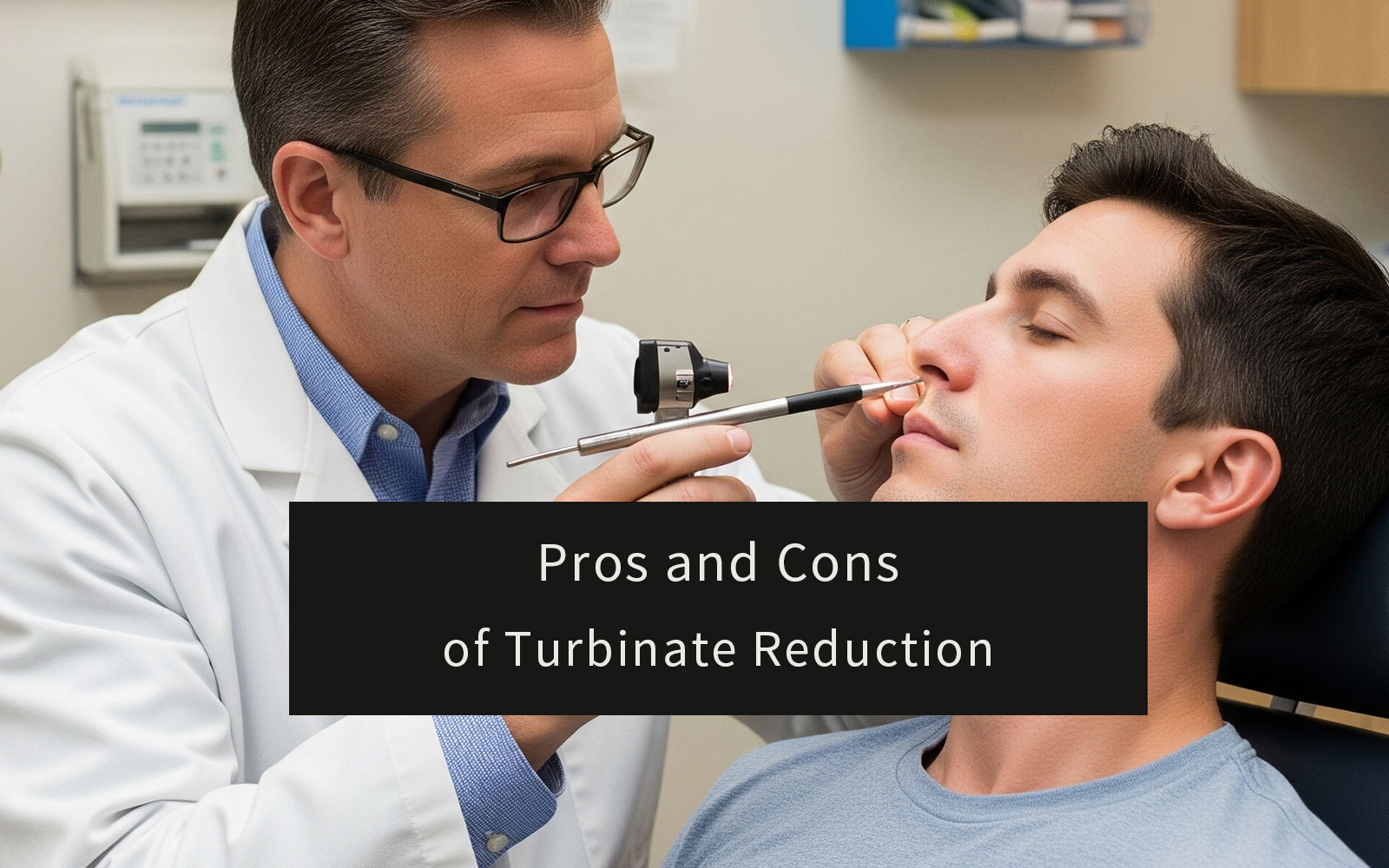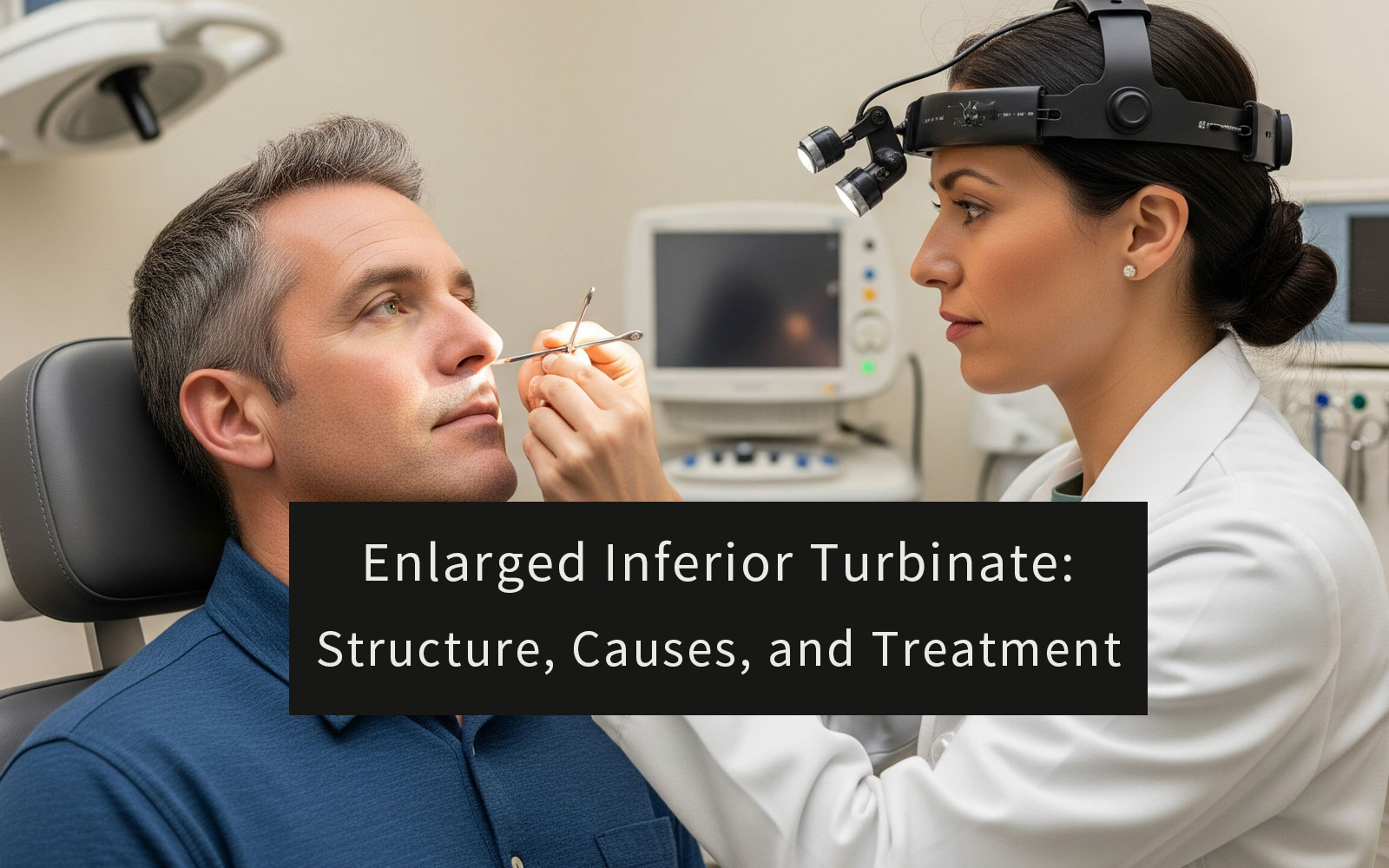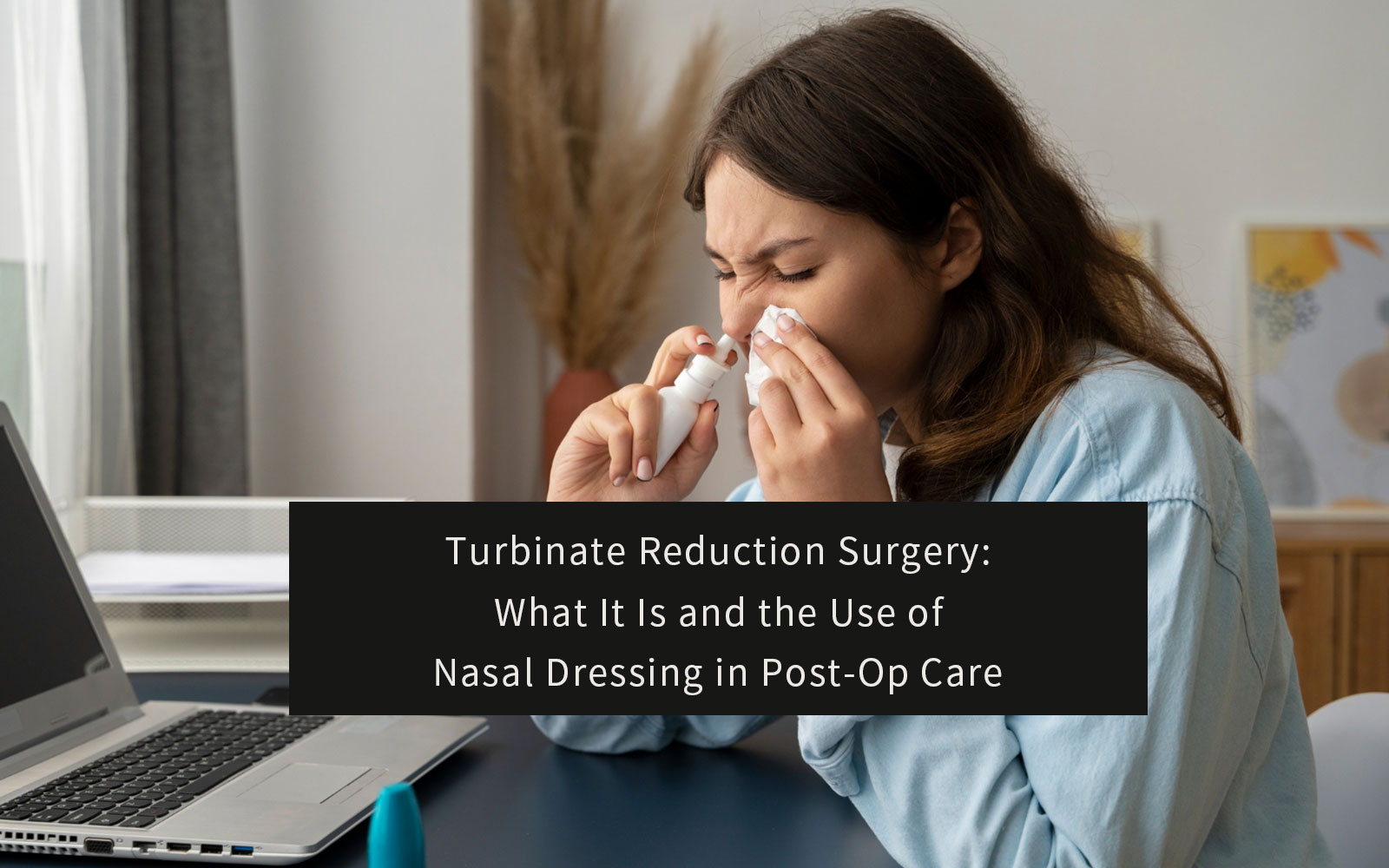Chronic nasal congestion can severely impact sleeping, breathing, and daily performance. For patients who do not respond well to medications, turbinate reduction surgery is often recommended by ENT specialists. This article explains the pros and cons of turbinate reduction, clarifies whether it changes nose shape, and outlines evidence‑based postoperative care, especially the role of absorbable nasal packing, to help patients and distributors understand realistic outcomes and recovery expectations.
Table of Contents
What Is Turbinate Reduction?
Turbinate reduction surgery is a procedure that decreases the size of the nasal turbinates, bony shelves covered by mucosa, to improve airflow while preserving mucosal function. Modern techniques typically reduce submucosal tissue to relieve obstruction without damaging the protective lining.
The inferior turbinates are most commonly treated because their chronic swelling can significantly narrow the airway. By contrast, the middle turbinate is more involved in sinus drainage pathways.
Common techniques include radiofrequency ablation, microdebrider‑assisted resection, and submucosal reduction. While approaches differ, the goal is consistent: reduce tissue bulk while preserving mucosa. Postoperative healing is influenced by both the surgical method and the choice of nasal dressing that protects the mucosa in early recovery.
Why Is Turbinate Reduction Done?
Turbinate reduction is considered when patients have persistent nasal congestion despite appropriate medical therapy for about 3–6 months. Common clinical indications include:
- Chronic nasal obstruction
- Sleep disturbances due to impaired airflow
- Snoring or mild sleep apnea
- Frequent sinus infections
- Loss of smell (hyposmia)
These symptoms often arise because the inferior turbinates, which normally warm, humidify, and filter the air we breathe, become chronically swollen or enlarged. When this tissue remains inflamed, airflow is blocked, sinus drainage is impaired, and olfactory receptors receive less stimulation. As a result, patients may experience ongoing nasal blockage, disturbed sleep, recurrent sinus infections, and a reduced sense of smell, all of which can significantly impact quality of life.
Pros of Turbinate Reduction Surgery
Improved Nasal Breathing
Turbinate reduction decreases the size of the swollen inferior turbinates, which are often the main cause of nasal obstruction. By removing or reshaping excess tissue while preserving the protective lining, the nasal passages open up and airflow becomes smoother. Patients who were previously forced to breathe through their mouths often describe a dramatic change, finally being able to inhale freely during daily activities and exercise.
Reduced Nasal Congestion
Chronic turbinate swelling can make people feel “permanently stuffed up,” even in the absence of a cold. After surgery, as swelling subsides and airway space increases, patients usually experience lasting relief from blockage. Many describe the sensation as if “a plug has been removed from the nose,” allowing effortless inhalation without relying on decongestant sprays or medications.
Better Sleep Quality
Nighttime nasal obstruction often leads to snoring and disrupted sleep. By clearing the airway, turbinate reduction reduces nighttime resistance to breathing, which in turn decreases snoring and promotes deeper, more continuous rest. Many patients report improved sleep quality, higher daytime energy, and better concentration. In some cases, the procedure can even help reduce the risks associated with sleep-disordered breathing.
Relief from Chronic Sinusitis Symptoms
Enlarged turbinates can block the natural drainage pathways of the sinuses, causing mucus buildup and repeated sinus infections. After surgery, improved ventilation and drainage make it harder for bacteria to grow and easier for medications such as nasal sprays to reach the sinus openings. This helps decrease both the frequency and severity of sinusitis episodes.
Minimally Invasive Options
Modern turbinate reduction techniques such as radiofrequency ablation, coblation, or microdebrider-assisted reduction are considered minimally invasive and are often performed in an outpatient setting. Most patients require only a short recovery period, with light activities resumed within 2 to 7 days under physician guidance. These methods usually involve less bleeding, reduced discomfort, and faster healing compared with traditional surgical approaches.
Long-lasting Results
For patients who do not respond to medical treatments, turbinate reduction offers long-term relief. Since the surgery directly addresses the physical obstruction, many patients enjoy sustained improvements for years. When underlying allergies are also managed with medications or lifestyle changes, the benefits are even more durable, reducing the likelihood of recurrence.
Better Quality of Life
Taken together, the improvements in breathing, sleep, and sinus health often translate into a markedly better quality of life. Patients frequently notice they can exercise more comfortably, sleep more soundly, and perform better during the day without constant nasal blockage. Many even report that their relationships improve once snoring decreases and their partner’s sleep is no longer disturbed.
Cons of Turbinate Reduction Surgery
Despite its benefits, turbinate reduction is not without risks. Understanding the potential drawbacks helps optimize patient selection and recovery planning.
Postoperative Discomfort
Some discomfort, including nasal pressure or mild bleeding, is common in the first few days. The use of soft, absorbable dressings generally reduce this compared with traditional non‑resorbable packing.
Early aftercare tips (follow your surgeon’s instructions):
- Avoid nose blowing for 48–72 hours; sneeze with your mouth open.
- Use isotonic saline sprays or irrigation as directed to keep mucosa moist.
- Sleep with the head elevated and avoid strenuous exercise for several days.
- Do not insert cotton swabs or objects into the nose.
Temporary Swelling
Initial swelling can temporarily narrow airflow. Congestion often peaks around 2–3 days and gradually improves over 2–4 weeks as tissues heal.
Risk of Over-Resection
If too much turbinate tissue is removed, patients may develop a rare but serious complication called empty nose syndrome, characterized by a sensation of nasal obstruction despite clear passages. Precise surgical technique and protective dressings help mitigate this risk.
Potential for Prolonged Recovery
Recovery speed is not the same for every patient, and some individuals may require a longer healing period depending on their anatomy, the surgical method used, and overall health. While many experience steady improvement within weeks, others may find that congestion, pressure, or crusting persists for a longer time.
A general timeline often observed is:
- Week 1: Congestion and pressure are common, and gentle saline care is usually started as instructed.
- Weeks 2–4: Swelling begins to recede, breathing gradually improves, and crusting decreases.
- Week 6 and beyond: Breathing benefits typically stabilize, but in some patients full comfort may take several months, especially if allergies are not well managed.
During this extended recovery phase, proper aftercare is crucial. Using an appropriate absorbable nasal dressing can support mucosal repair, reduce crusting, and help prevent adhesions, making the healing process smoother even when recovery takes longer than expected.
Does Turbinate Reduction Change the Shape of the Nose?
One frequently asked question is whether this surgery alters nasal appearance. Because turbinates are internal structures, turbinate reduction alone does not change the external shape of the nose.
However, if combined with septoplasty or rhinoplasty, minor changes may occur. Surgeons are careful to preserve the nose’s aesthetic contour. Postoperative swelling should also be considered when evaluating early cosmetic appearance. Proper nasal dressing placement can reduce internal swelling and help maintain nasal symmetry during recovery.
What Do ENT Specialists Say About Turbinate Reduction?
ENT specialists emphasize individualized evaluation using symptoms, nasal endoscopy, and imaging when indicated. Surgery is reserved for cases where obstruction significantly affects quality of life after medical therapy has been optimized. Equally important is meticulous postoperative care, including the use of absorbable dressings, to smooth recovery and improve patient comfort.
What Is the Role of Absorbable Nasal Dressing in ENT Procedures Like Turbinate Reduction?
In turbinate reduction surgery, effective postoperative wound care is crucial for minimizing complications and supporting proper healing. Absorbable nasal dressings help control bleeding, preserve airway patency, maintain moisture, and reduce adhesion formation.
NasoAid® is a collagen‑based absorbable nasal dressing composed of collagen and carboxymethyl cellulose (CMC). It provides a dual hemostatic mechanism: collagen activates fibrin formation, while CMC promotes platelet aggregation and maintains a moist environment for epithelial repair.
Compared with traditional packing that requires manual removal, NasoAid® gradually disintegrates within 7–14 days, lessening discomfort and secondary trauma. Its highly porous sponge absorbs up to 35× its weight in fluid, stabilizes bleeding, and preserves space to lower adhesion risk. It can be trimmed, compressed, and rehydrated; when moistened, it regains full volume in about 30 seconds. Its biocompatibility meets ISO 10993 standards, and it is commonly used after turbinate reduction, septoplasty, and sinus surgery.
| Parameter | NasoAid® (Collagen+CMC) | Traditional Gauze Packing | All‑CMC Gel |
|---|---|---|---|
| At‑a‑glance | Dual hemostasis; resorb 7–14 days; no removal; trim/rehydrate; reduced adhesions | Mechanical pressure; removal needed (24–72 hr typical); higher discomfort; adhesion risk if left too long | Hemostatic support; fully resorbable; comfortable; may lack structural support in wider cavities |
